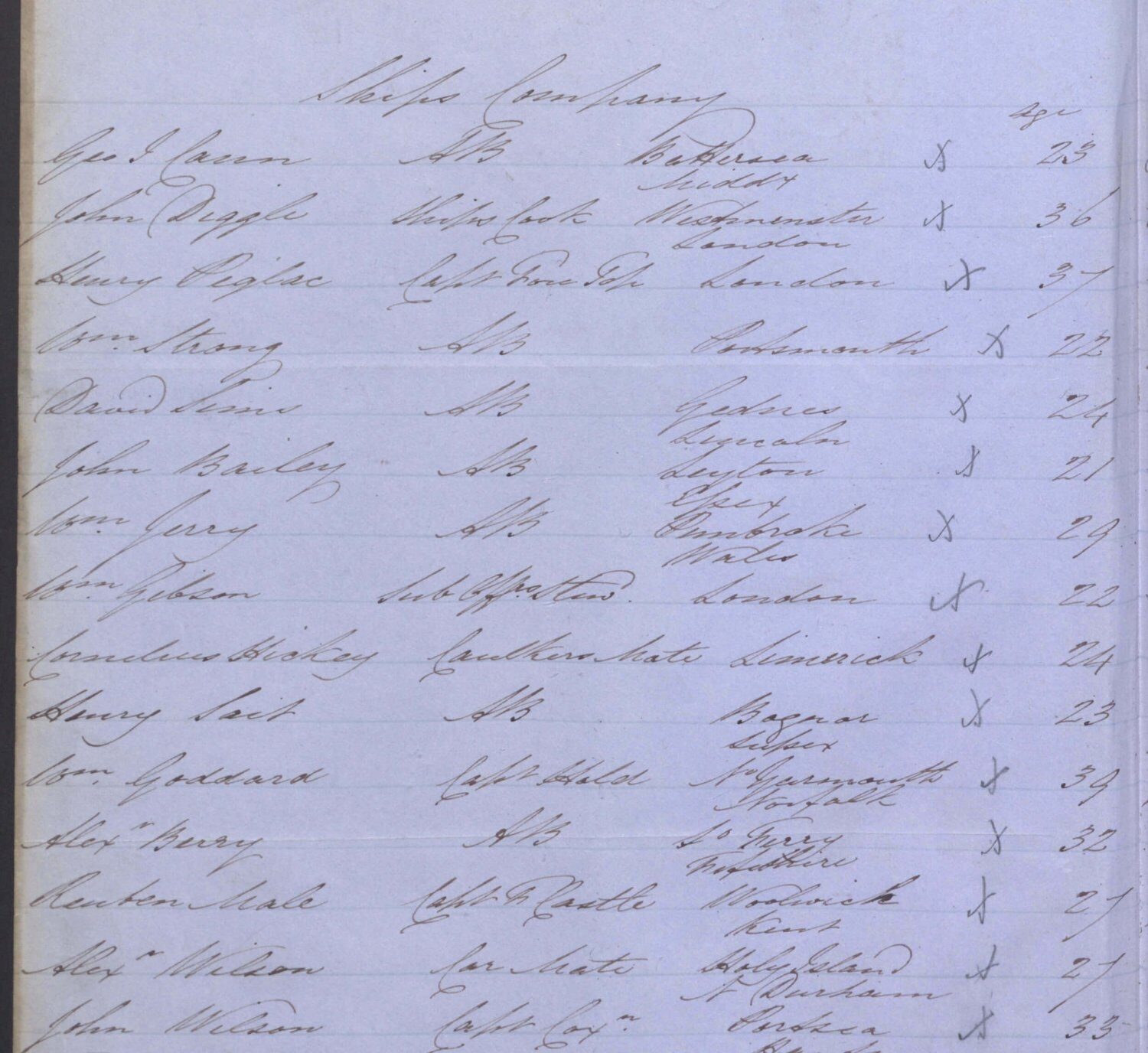“…the slumbering past”: Revisiting Franklin’s Lost Expedition
Re-watching the excellent drama series The Terror, recently shown on BBC2, has inspired me to scour through AM’s Age of Exploration resource once again for material on Arctic exploration and, in particular, on Franklin’s Lost Expedition of 1845.
This legendary yet doomed quest for the North West passage first captured my imagination when I helped to bring this resource to fruition in 2018. The images of hostile and icy landscapes, and reports from the numerous search expeditions that attempted to establish the fate of Franklin, his crew, and his two ships, HMS Erebus and HMS Terror, have really stayed with me.
As I browsed through journals, drawings, maps, reports, personal correspondence, newspaper clippings and other treasures digitised from across the world, the following sources – all of which reveal parts of the lost expedition’s long and continuing narrative – particularly stood out:
The below image shows a section from a “list of the Officers and Crew on HMS Terror as they appear on the last Muster Book recorded from her, ending the 30th of June 1845”, digitised from Documents relating to Arctic Expeditions, 1845-1848 held at The National Archives, UK. A moving reminder that these men, many in their 20s, came from all over Britain to take part in this expedition:

From Documents relating to Arctic Expeditions, 1845-1848 © The National Archives, UK. Further reproduction is prohibited without permission.
Below is a passage from Journals kept by Sir Erasmus Ommanney, Volume 2, 1850-1851, digitised from the Glenbow Museum. Ommanney was second in command of Horatio Austin’s 1850 expedition in search of Franklin and his crew and was the first person to find traces of the Franklin expedition at Cape Riley on Devon Island, and then at Beechey Island:
…close to this beach I discovered traces of an Encampment consisting of 3 circular tents…on examining the beach I found some empty preserved meat tins with Donkin’s name, some fragments of towels, and clothing…pipe with the remains of the wad in it…
…I decided upon proceeding to Beechey Isd. – Here certainly were traces of our unfortunate country-men, for who else can it be, Parry is the only person on record who ever visited this coast before…

Journals kept by Sir Erasmus Ommanney, Volume 2, 1850-1851, © Glenbow Museum. Further reproduction is prohibited without permission.
Included here is a sketch of three graves also discovered at Beechey Island – this sketch is enclosed with a letter from Austin dated 16th July 1851 in “Reports of Proceedings: Captain Austin’s Expedition” within Documents relating to Arctic Expeditions, 1850-1851. The three graves belonged to John Torrington, John Hartnell, and William Braine, all of whom served on Franklin’s expedition and died in early 1846.

From Documents relating to Arctic Expeditions, 1850-1851 © The National Archives, UK. Further reproduction prohibited without permission.
Below is a segment of a list from Scottish explorer John Rae who made significant discoveries about the fate of Franklin’s expedition from his conversations with First Peoples during his 1854 Arctic expedition. Digitised from Barrow Bequest, volume 9 housed at the British Library, it is titled “List of articles, purchased by Dr Rae from the Esquimaux; said to have been obtained at the place where the bodies of starved persons were found –“ and signed “Repulse Bay 8th July 1854”:

Barrow Bequest, volume 9, 28 Sep 1849 - 17 Nov 1892 © British Library. Further reproduction is prohibited without permission.
Finally, from amongst Letters of Sir John Franklin and members of his family digitised from the British Library, a moving letter, only dated “Oct 13” but presumably written in the early 1860s, by Franklin’s niece Sophia Cracroft to another family member. She describes hearing reports from a search expedition by Charles Francis Hall concerning sightings “11 years ago” of the Captain of HMS Terror, Francis Crozier, and two crew members:
…our minds full of the startling revelation of Mr Hall the American, who has rec.d intelligence that Capt. Crozier and 2 men were alive some 11 years ago. Capt, Hall is over sanguine in supposing it to be possible that they may yet survive, and after all he may not have formed any such distinct conclusion…
...I ought to say however that to our minds, the identity of Capt. Crozier is completely established. It is altogether a fearful waking up of the slumbering past.

Letters of Sir John Franklin and members of his family © British Library. Further reproduction is prohibited without permission.
As these fascinating documents demonstrate, Age of Exploration offers students and researchers an opportunity to investigate for themselves a selection of the often tragic, unsettling, and startling accounts that arose from the Franklin search expeditions.
From personal reflections and first-hand reports to maps depicting geographic revelations and artworks offering a window into awe-inspiring landscapes, the material collated from these search expeditions has an eternally thrilling and haunting story to tell.
About the collection
Age of Exploration is out now.
Recent posts

The blog highlights American Committee on Africa, module II's rich documentation of anti-apartheid activism, focusing on the National Peace Accord, global solidarity, and student-led divestment campaigns. It explores the pivotal role of universities, protests, and public education in pressuring institutions to divest from apartheid, shaping global attitudes toward social justice and reform.

This blog examines how primary sources can be used to trace the impact of young voices on society, particularly during pivotal voting reforms in the UK and the US. Explore materials that reveal insights into youth activism, intergenerational gaps, and societal perceptions, highlighting their interdisciplinary value for studying youth culture, activism, and girlhood across history.
